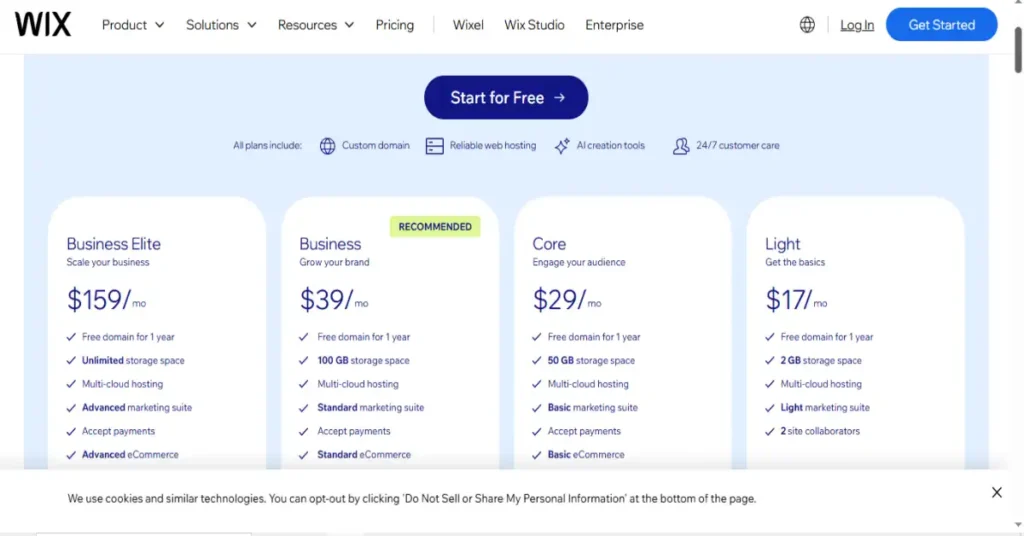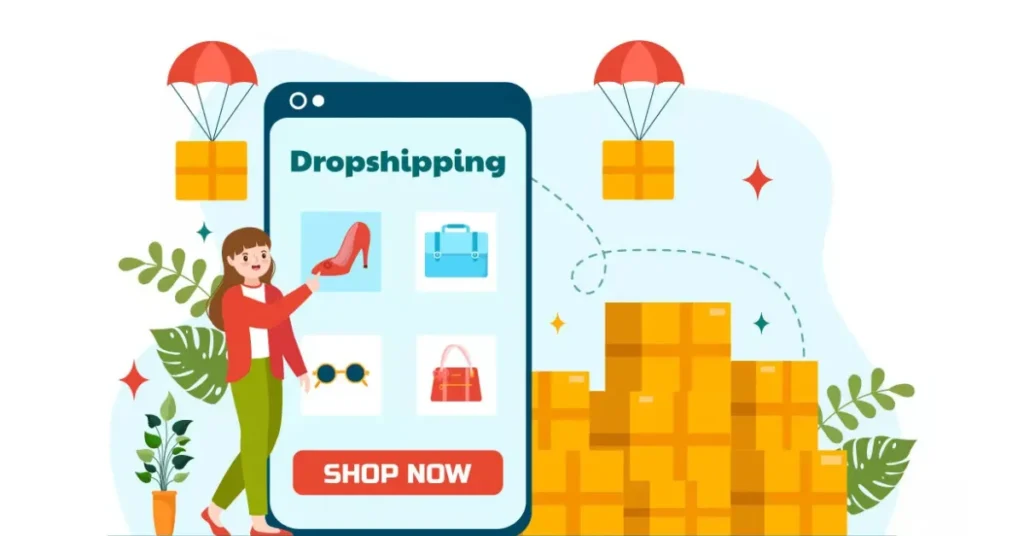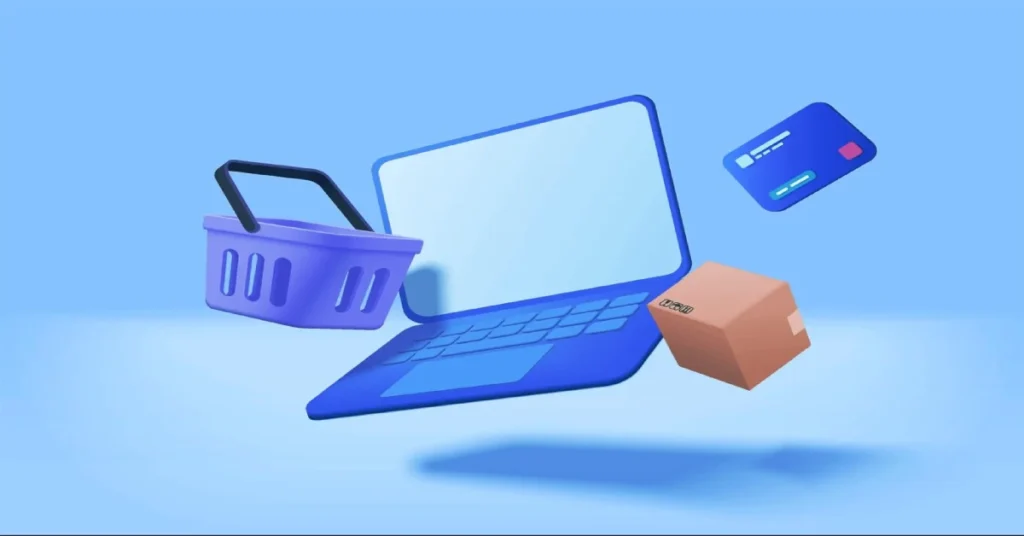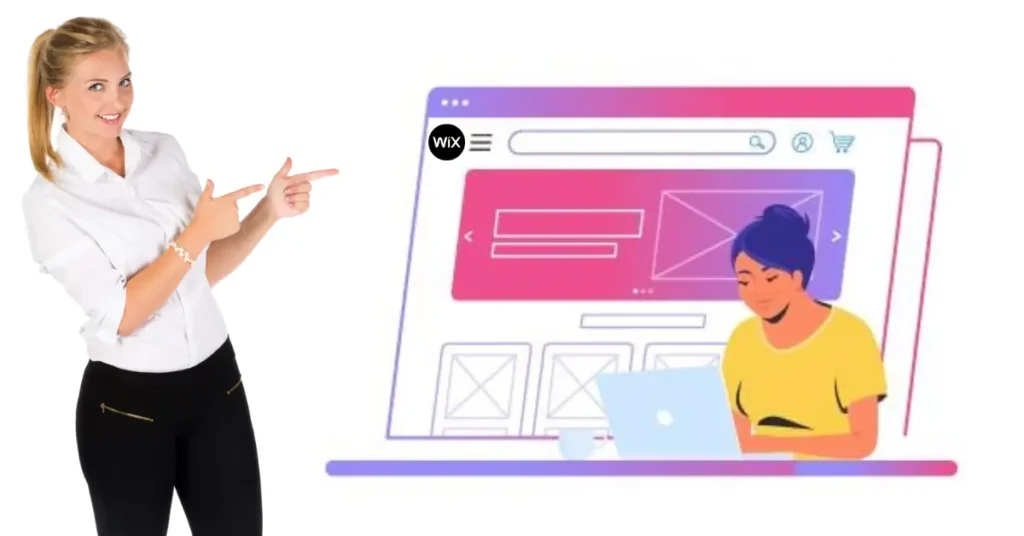Building an online store can feel overwhelming. You want a platform that is both simple to use and powerful enough to help your business grow. Wix eCommerce emerges as a popular solution, empowering countless entrepreneurs to launch their digital storefronts without requiring coding skills. I want to guide you through everything Wix eCommerce offers, including its key strengths, how it can help your business, and important considerations as your store flourishes.
1,003,063 live Wix stores are running on the platform. In 2024, Wix experienced an 18% increase in its store count in the fourth quarter. It continues to be a top choice for brands seeking straightforward website-building technology. This popularity shows Wix’s strong position in the market.
What is Wix eCommerce? A Closer Look

Wix eCommerce provides a complete set of tools to create, manage, and scale an online business. Think of it as your all-in-one partner for selling products and services online. It integrates directly with the well-known Wix website builder, offering a cohesive experience.
This article from SQ Magazine provides a comprehensive overview of Wix’s performance and trajectory in 2025. It highlights Wix’s growth from a DIY website builder to a robust platform, with over 272 million websites built, revenues projected to exceed $2 billion by the end of 2025, and a 43% market share among U.S. DIY website builders. The platform has over 3 million paid subscribers globally and is popular among small businesses.
This platform shines for small to medium-sized businesses, new startups, and creative entrepreneurs. If you are starting an online venture and prefer a visual, intuitive approach, Wix eCommerce could be an excellent fit. You won’t need to write code or understand complex development processes.
Key Features of Wix eCommerce: Building Your Online Store
Wix eCommerce gives you many features to build a thriving online shop. Let’s look at what you can expect:
- Intuitive Website Builder & Design Freedom:
- Drag-and-Drop Editor: You can easily arrange elements on your pages. This means simple changes and quick adjustments.
- Vast Template Library: Choose from over 900 professional templates. These cover many industries, like fashion, electronics, and home decor. You can find a design that fits your brand.
- Mobile Responsiveness: Your store automatically adjusts to look great on phones and tablets. Wix also provides tools to fine-tune your mobile layout.
- AI Design Assistance: Wix has integrated AI to help with design ideas and even content creation. This can speed up your store’s setup.
- Robust Product Management:
- Effortless Product Setup: Add physical items, digital downloads, services, or subscriptions.
- Smart Inventory Tracking: Wix automatically updates stock levels when an order comes in. You can also manually adjust inventory. Higher plans offer bulk import and export options for products.
- Product Variations: Manage different sizes, colors, or styles for each item. You can set up to 1,000 variants for a single product.
- Diverse Sales Channels:
- Your Website: This is your primary selling hub.
- Marketplace Integration: Connect with popular platforms like Amazon, eBay, Etsy, and Google Shopping. This helps you reach more customers.
- Social Selling: Sell directly through Facebook, Instagram, TikTok, and Wish. Many consumers discover products on social media today.
- In-Person Sales (POS): Use Wix Retail POS and Mobile POS systems. This means you can manage sales from a physical store or a pop-up event from the same dashboard.
- Streamlined Payments & Shipping:
- Wix Payments: This is Wix’s payment gateway, offering a simple setup. It typically charges 2.9% + $0.30 per online transaction in the US. Notably, Wix does not add extra transaction fees for using its native payment processor.
- Multiple Payment Options: Connect to over 80 other payment gateways. These include PayPal, Stripe, Afterpay, and Klarna. This gives your customers many ways to pay.
- Flexible Shipping Rules: Set up shipping rates by region, product weight, or order price.
- Automated Taxes: Wix helps calculate sales tax for your transactions.
- Shipping Labels: Print discounted shipping labels directly from your dashboard.
- Powerful Marketing & SEO Tools:
- Built-in SEO: Wix offers tools like the Wix SEO Wiz. This helps you optimize your pages for search engines. You can customize meta tags and URLs. Reports from 2024 indicate that Wix users using its SEO tools see a 70% boost in organic traffic within 3-6 months.
- Email Marketing: Create and send newsletters. Set up automated emails, like abandoned cart reminders.
- Social Media Marketing: Design social media posts with templates. Manage paid ad campaigns directly.
- Discounts & Loyalty: Offer coupons, digital gift cards, and build customer loyalty programs.
- Blogging: Write articles to attract visitors and share news.
- Centralized Business Management Dashboard:
- All-in-One Hub: Manage orders, inventory, customers, and bookings from a single place.
- Customer Relations (CRM): Keep track of customer interactions.
- Reports & Analytics: Monitor sales performance, website traffic, and customer behavior with customized reports.
- Robust Infrastructure & Security:
- Reliable Hosting: Wix handles all hosting, ensuring your site is online. They report 99.9% uptime.
- Scalable Performance: The platform can handle high traffic and sales volumes. Wix claims support for up to 750 simultaneous transactions per second.
- Top-Tier Security: Your store is PCI DSS Level 1 compliant. This is the highest standard for processing credit card payments.
Wix eCommerce Pricing: Understanding Your Investment

Choosing an e-commerce platform means understanding its costs. Wix offers different premium plans tailored for online stores. These include Core, Business, and Business Elite. Each plan provides more features as you move up.
Here’s a general idea of what each plan offers:
| Plan Name | Key E-commerce Features | Ideal For |
|---|---|---|
| Core | Basic store setup, product display (up to 50,000), abandoned cart recovery, basic discounts, 25 dropshipping products. | New stores, small product catalogs, testing the waters. |
| Business | All Core features, plus more dropshipping products (up to 250), unlimited back-in-stock notifications, up to 5 currencies, basic loyalty programs. | All Core features, plus more dropshipping products (up to 250), unlimited back-in-stock notifications, up to 5 currencies, and basic loyalty programs. |
| Business Elite | All Business features, plus extensive dropshipping (up to 50,000 products), more currencies (up to 10), advanced loyalty tiers, priority support. | High-volume stores, established businesses, and comprehensive needs. |
Uncovering the Full Investment: Beyond the Monthly Fee
When you consider Wix eCommerce, it’s helpful to look past just the monthly subscription cost. Think about the complete picture of what your online store might cost over time.
- App Ecosystem Expenses: Wix has an App Market with many third-party applications. These apps can add powerful features like advanced reporting, specialized shipping tools, or unique marketing integrations. While many offer free tiers, accessing their full capabilities often means paying extra monthly fees. For example, if you need a sophisticated customer support chat or an advanced analytics tool not built-in, you might subscribe to a separate app. These costs add up and can affect your budget.
- Transaction Processing Fees: Wix Payments generally has a straightforward processing fee (around 2.9% + $0.30 in the US). However, if you use other payment providers, their fees can differ. It is important to compare these to understand your payment processing expenses. Wix does not add its transaction fees on top of the processor’s fee, which is a good point.
- Feature-Driven Upgrades: The different plan tiers mean that certain valuable features are available only on higher plans. For example, if your dropshipping business grows and needs to list more products, you will need to upgrade to a Business or Business Elite plan. Likewise, if you want to offer loyalty programs or sell in multiple currencies, you’ll find those features in the higher tiers. This means your operational costs might increase as your business expands, something many initial reviews might not highlight.
Beyond selling your handcrafted items or curated products, Wix eCommerce also opens doors to alternative selling models. If the idea of starting an online store without managing physical inventory sounds appealing, you might consider dropshipping. This popular fulfillment method lets you sell products directly from a supplier to your customer. To explore this exciting possibility in more detail and learn how you can set up a store with virtually no upfront stock, dive into my comprehensive guide on Wix dropshipping.
Is Wix eCommerce Right for Your Business? Realities to Consider

Wix eCommerce offers many advantages, especially for those starting out or with specific needs. However, I think it’s important to consider all angles to make the best choice for your business’s future.
Key Advantages:
- Exceptional Ease of Use: Launching your store is quick and straightforward. You can focus on your products, not coding.
- Design Freedom: The visual editor lets you create a unique and attractive store that reflects your brand.
- All-in-One Simplicity: Managing your website, products, orders, and marketing from one place saves time and simplifies operations.
- Ideal for Many: It works well for small to medium-sized businesses, service providers, and creative professionals who value design and simplicity.
Important Considerations and What to Think About:
Sometimes, an online platform might feel perfect at the start, but as your business grows, new questions appear. Let’s think about some deeper aspects of Wix eCommerce.
- Navigating Growth and Scaling Beyond the Basics:
- High-Volume Operations: What happens if your store goes viral? While Wix claims scalability for many transactions, businesses with extremely large product catalogs (e.g., hundreds of thousands of SKUs) or those processing thousands of orders daily might wonder about long-term performance. Platforms built from the ground up for enterprise-level scale sometimes offer more specialized tools for complex inventory management, multi-warehouse fulfillment, or intricate supply chain logistics.
- Deeper Custom Integrations: As businesses grow, they often need to connect their online store to highly specialized systems. Think about advanced Enterprise Resource Planning (ERP) software, unique Customer Relationship Management (CRM) tools, or bespoke fulfillment systems. While Wix has an app market, sometimes these deeper connections require extensive custom coding or direct API access. You might ask, “Can Wix seamlessly integrate with my unique operational software as my business expands?”
- Unlocking Deeper Customization:
- True Design Freedom: Wix offers amazing design flexibility within its editor. But what if you dream of a truly unique checkout flow? Or a personalized product configurator that requires deep code manipulation? While Wix allows custom code snippets, platforms with open-source foundations or more extensive developer ecosystems might offer more freedom for pushing the boundaries of design and functionality at a code level. You might ask, “How much control do I truly have if my vision demands something completely outside the box?”
- Planning for the Future: Moving Your Business’s Home:
- Data Portability: Imagine your business grows so large that you decide to switch platforms. How easy is it to take all your hard-earned data – your customer lists, order history, and product details – and move it to a new system? While setting up a store on Wix is easy, the process of migrating out of Wix is an important consideration. Businesses should ask, “If my needs change drastically, how smooth will the transition be to a different platform?”
- Real-World Performance Under Pressure:
- Stress Testing: Wix reports excellent uptime and high transaction capacity. However, if your business anticipates flash sales, holiday rushes, or consistent peak traffic, you might wonder about real-world performance. Are there independent case studies or detailed benchmarks of Wix stores handling thousands of simultaneous visitors or massive order spikes without a hitch? Knowing this can provide greater peace of mind for high-stakes selling events. You might ask, “How will my Wix store perform when everyone wants to buy at the same moment?”
- The View from Your Developer or Agency:
- Partnership Economics: If you plan to hire a web designer or agency, their perspective matters. Some agencies have specific concerns about Wix’s pricing model for designers or the maturity of newer, more advanced builder tools like Wix Studio. Knowing this can help you understand potential costs or limitations if you outsource development work. Consider asking, “What does my web developer think about building on Wix for long-term projects?”
Wix eCommerce vs. Key Competitors: A Brief Look

When choosing an e-commerce platform, comparisons often arise.
- Wix vs. Shopify: Shopify often comes up in conversations about e-commerce. It is widely recognized for its strong focus on online selling. Shopify typically offers a wider array of e-commerce-specific apps (over 8,000) compared to Wix’s (over 800). Wix generally provides more overall website design flexibility, making it a favorite for businesses needing a robust website alongside their store. Shopify often appeals to businesses that anticipate rapid growth and need deep e-commerce features from day one.
- Wix vs. Other Website Builders (e.g., Squarespace): Wix stands out with its comprehensive feature set for e-commerce compared to other general website builders like Squarespace, which has also improved its e-commerce offerings. Wix provides more advanced sales tools.
While I’ve focused heavily on Wix eCommerce, you might wonder how it stacks up against other popular platforms. Choosing the right online store builder is a big decision, and each platform offers unique strengths. For a deeper analysis and a comprehensive breakdown of features, pricing, and scalability across the leading contenders, I highly recommend reading our detailed comparison of Shopify vs Wix vs Squarespace.
Recent Trends in E-commerce and How Wix Fits In
The e-commerce world changes quickly. Small businesses need to adapt. Here are some trends and how Wix aligns with them:
- AI and Machine Learning: AI tools are becoming crucial. They help with personalized product recommendations and improved customer service. Wix is incorporating AI for design, product descriptions, and even customer chat.
- Social Commerce: Selling directly on platforms like Instagram and TikTok is growing. Wix helps you connect your store to these channels, allowing customers to buy where they browse.
- Augmented Reality (AR): Consumers want to visualize products before buying. AR features, like virtual try-ons, are gaining traction. While advanced AR might need third-party integrations, the trend highlights the need for rich product experiences.
- Flexible Payments: Offering many payment options, including digital wallets and “buy now, pay later” services, is key. Wix integrates with over 80 payment gateways, meeting this demand.
- Subscription Models: More businesses are offering subscriptions. Wix supports this model directly, allowing you to set up recurring payments.
- Mobile-First Shopping: Over 50% of Wix e-commerce sales happen on mobile devices. Wix’s mobile optimization tools are essential here.
Tips for Maximizing Your Wix eCommerce Store
Once you choose Wix eCommerce, here are some ways to help your store thrive:
- Use SEO Tools: Take advantage of the Wix SEO Wiz. Optimize your product descriptions, titles, and images. This helps customers find you on Google.
- Optimize Product Pages: Use high-quality images and clear, persuasive descriptions. Make buying easy for your customers.
- Engage with Marketing Features: Set up automated emails. Use social media templates to promote sales. Create loyalty programs to reward repeat customers.
- Carefully explore the App Market: Look for apps that solve specific problems for your business. Be mindful of added costs.
- Analyze Your Data: Regularly check your Wix Analytics. Understand where customers come from. See what products sell best. Use these insights to make smart business decisions.
Conclusion
Wix eCommerce offers a powerful and approachable platform for launching and growing an online store. Its user-friendly design tools, comprehensive features, and integrated business management make it an attractive option for many entrepreneurs. I believe it is a strong contender for small to medium-sized businesses looking for an all-in-one solution without needing deep technical knowledge.
As your business evolves, consider the deeper conversations around scalability and customization needs. Understand the full investment, including potential app costs and plan upgrades. By carefully evaluating these aspects, you can confidently choose if Wix eCommerce is the right home for your growing online venture.





